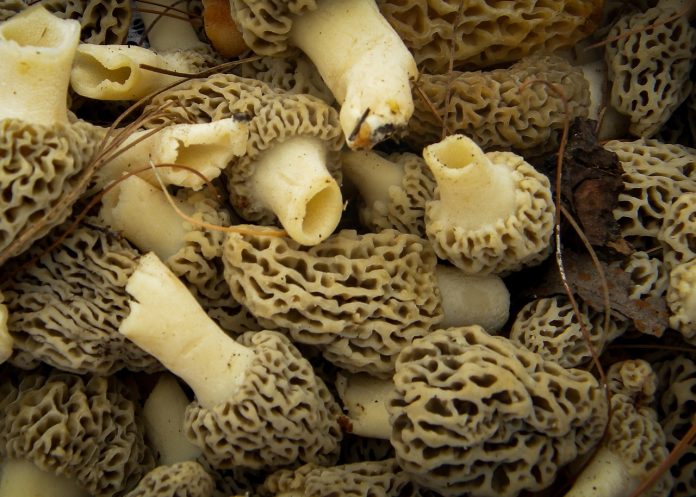Though longer days and migrating birds tell me that spring has sprung, two of my favorite signs of the season appear at my feet. Ramps and morels are among nature’s most flavorful foods.
Ramps
Ramps are wild leeks, pungently aromatic members of the lily family. In early April, they form dense carpets in rich damp soil beneath canopies of beech, maple, poplar, oak, or hickory trees.
If you find trilliums or mayapples, you’re in ramp habitat.
Ramps grow rapidly for only a few weeks in the spring. Bright sunlight and spring rains trigger their growth.
Their green elongate leaves are distinctive on a forest floor that is still drably colored. In June, the leaves die back, and the plants flower.
As one of the first plants to appear in the spring, ramps were long considered a tonic after months of cold winter weather with no fresh vegetables. In fact, ramps are an excellent source of vitamin C.
But ramps are a pungent herb best known for their flavor — part onion, part garlic.
Most people either love ‘em or hate ‘em.
Our first spring in West Virginia, my wife and I found the patch of ramps we still visit each spring. They were easy to recognize.
Clumps of lush green leaves, each one broad, flat, and spear-shaped, covered the ground. And a few inches beneath the surface, we found clusters of white aromatic bulbs.
We dug up a few handfuls, rinsed them in the stream, and took them home. There we boiled them for a few minutes to tone down the flavor just a bit. Then we sauteed them with some tenderloins, and we were hooked.
Ramps are celebrated each spring at festivals throughout Appalachia. Search online for a festival near you.
Morel mushrooms
Morel mushrooms are another springtime treat I search for on the forest floor.
They are truly one of nature’s most delicious natural foods. Unfortunately, their appearance is unpredictable. We usually find them sometime in April.
Morels, an easily recognized group of edible North American mushrooms, are a gourmet delight. Morel omelets and grilled meats smothered in morels and ramps are major perks of country life.
When my daughters were little girls (a lifetime ago), they were the best morel hunters. Their eyes were so much closer to the ground. When they squealed, we knew they had found another morel.
Morels are among the easiest mushrooms to identify. A fleshy, pitted, triangular head sits perched atop a rubbery stalk.
Related story: Local mushroom expert is ready for the hunt
Some describe the head as resembling a sponge or a pine cone. I think the pits and convolutions look more like a brain.
In any case, it’s the distinct appearance of the head that makes morels easy to recognize.
Morels range from tan to dark brown in color and measure three to eight inches tall. Both the head and stalk are hollow. The best part of a morel hunt is when we cradle and smell handfuls of the cool moist prizes.
The aroma is rich and earthy, yet subtle — reminiscent of organic humus from the forest floor.
And where do you find morels?
Here I’m afraid, you’re on your own, unless you’re owed favors from a morel-hunting friend.
Morel hunters are as protective of their favorite spots as anglers are of their best fishing holes. We’ve always found morels under or near dead apple and elm trees.
And field guides list old orchards and recently burned fields as morel habitat.
Warning
Before planning a mushroom hunt, heed these warnings.
Many mushrooms are poisonous; some are deadly. Beginners might confuse poisonous false morels, for example, with true morels.
This is not something to learn by trial and error. Study field guides, or better yet, take a short course on mushroom identification at a local nature center or community college.














